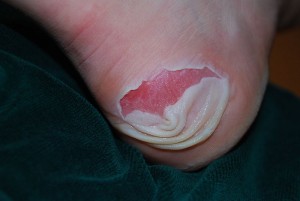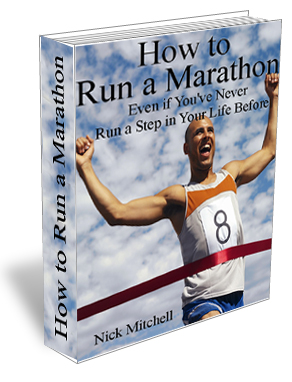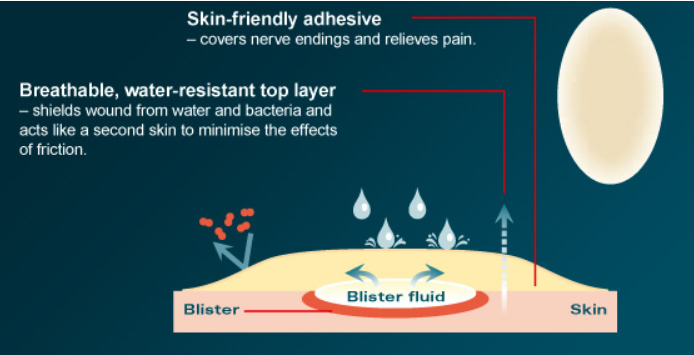How to get rid of blisters on your feet so you can get back to running straight away
Blisters seem to be insignificant and trivial, but once you suffer one or more blisters, it becomes clear that they can be a quite debilitating injury.
| The best thing to do is to try and avoid getting a blister but sometimes things conspire against you and you end up getting one or more.If not treated correctly blisters can become infected and stop you running for days, weeks and sometimes in the worst cases months. |

How to get rid of blisters
Through your miles of training, despite your every effort to avoid blisters it is quite likely that you may end up with a blister or two. So what is the best way to get rid of blisters?
There are two methods I would advise depending upon how squeamish you are. Before carrying out either of these it is essential that you wash and disinfect your hands and the area of the blister. You should also disinfect any tools you will be using such as needles or scissors.
How to Get Rid of Blisters if You are Squeamish
Firstly, with a needle pierce two small holes on opposite sides of the blister. Then gently press on the blister with a sterile piece of cotton wool and drain out the fluid.
Do not remove the loose skin as this will still act as a protective layer whilst the new skin underneath toughens up.
Smear an antiseptic cream across the area of the blister and then place a plaster over the area which will again act as a protective layer whilst the new skin toughens up. This method should enable running to be resumed within a couple of days.
The fastest method is not for the squeamish.
How to Get Rid of Blisters – Not For the Squeamish!
Pierce the blister as in the previous method but then using sharp, fine scissors cut off the loose skin exposing the new skin. This won’t hurt as the skin is already separated away, although be careful as the new skin underneath will be tender. It is worth taking a deep breath and going for this method, as you’ll be glad you did.
| Dry the blistered area after sterilising it with a liquid steriliser and place a special hydrocolloid blister plaster over the area. These specialist plasters stick to the new skin and protect it until the new skin has hardened up. There are a number of brand names available but I only have experience of Compeed Blister Patch, which I definitely would recommend.. |
Once I have treated a blister in this way I have been back to running the following day, so its definitely worth going for this method.
Both of these methods should reduce the risk of infection and have you back running very quickly and not missing out on valuable training days.
There's a Lot More Where That Came From… |
|
 |
This article is a condensed snippet taken from Nick Mitchell’s information-packed manual How to Run a Marathon. Your essential manual to enable you to run a successful marathon includes training schedules, advice on everything you can think of and lots you probably haven’t even thought of! You need this manual if you want to cross the marathon finish line with energy to spare, in a personal best finishing time and with a big smile on your face. More details here: VirtualHealthClub.com/marathon |


Hey Christopher, thanks for your feedback.